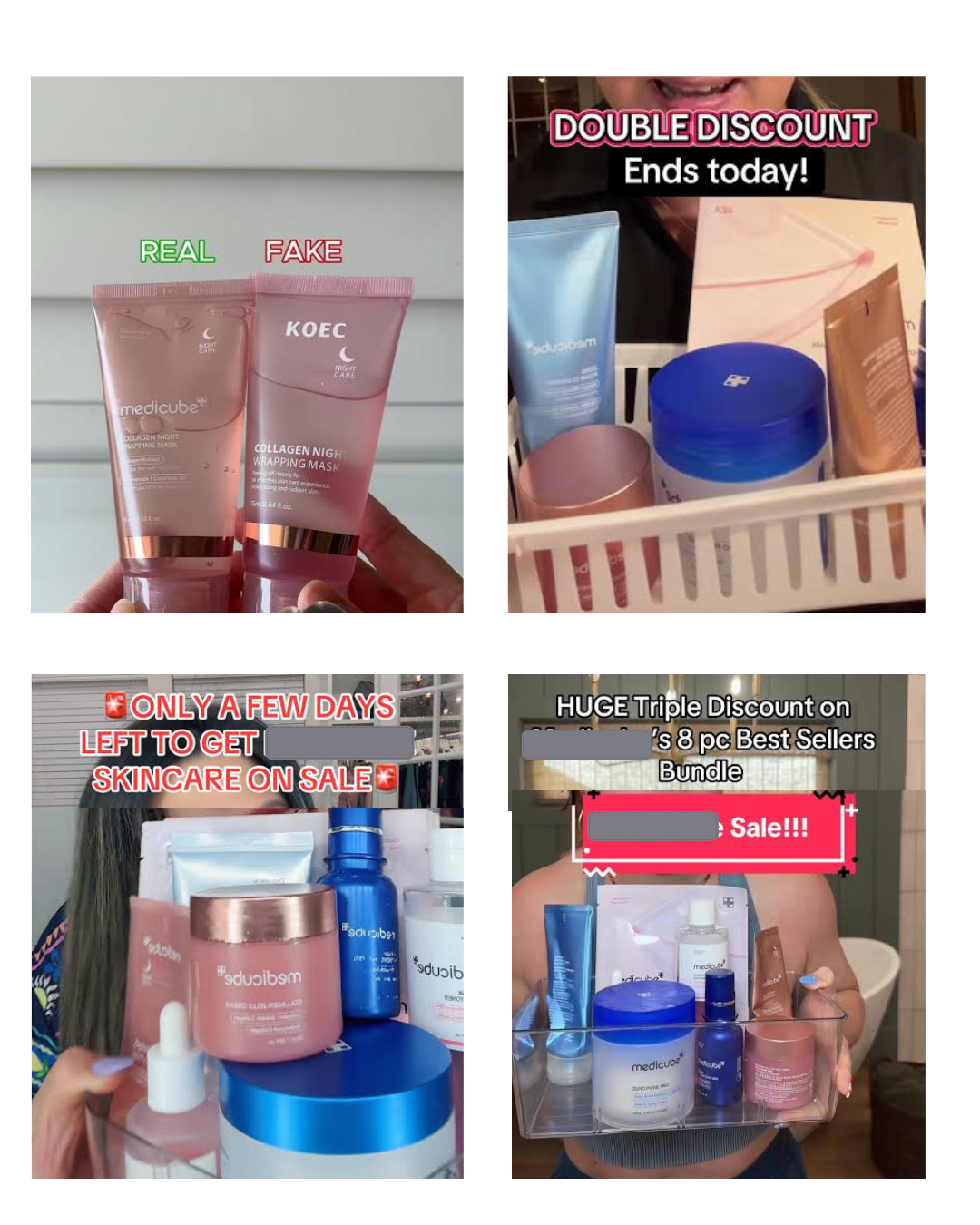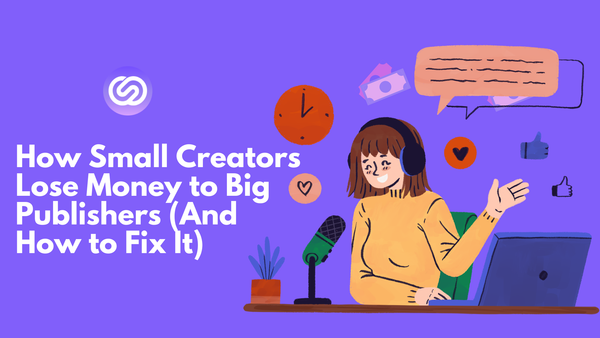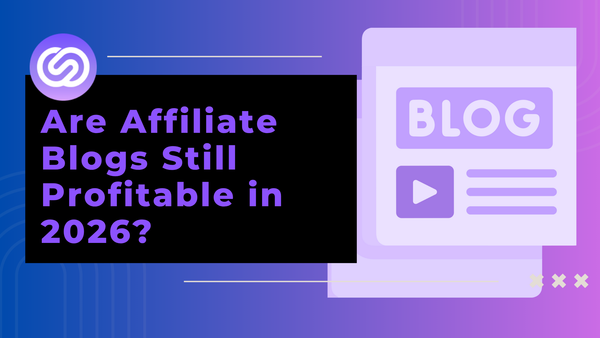How Influencers Are Fueling TikTok Shop’s Fake Discounts, Rip-Off Bundles, and Countdown Scams

The rise of manipulative offers on TikTok Shop is hard to ignore.
TikTok Shop has a structural edge over traditional affiliate platforms. While Amazon affiliates and others rely on creators driving traffic from external social media channels like Instagram, facebook, affiliate websites or even Youtube, TikTok collapsed the funnel into a single ecosystem. A creator can film, post, attract views, and sell a product all without a buyer ever leaving the app. The brands too can create shops, find affiliates, and attribute their commission on the same platform. This seamlessness is powerful, but as the purchase funnel gets faster, it also means manipulative tactics spread faster. Deceptive deals do not just exist; they perform, because every step from discovery to persuasion to checkout happens in the same feed.
In this piece we will break down why these deceptive formats thrive, why ethical creators find themselves sidelined, and what brands and TikTok itself need to reconsider before trust in the platform erodes further.
TikTok Shop’s strength is also its weakness. The seamless link between content and commerce removes friction for buyers, but it also removes their natural pause to evaluate a purchase making the purchases ‘almost thoughtless’, as intended. TikTok is built on minimum-barrier, minimum-attention interactions. As a result, most consumers rarely cross-check what they see in a video with the actual product listing in their cart. This has opened the door for creators and sellers to exploit urgency-driven formats.

Here are the most common tactics:
- Countdown scams: A timer suggests an offer is about to expire, but the same “limited-time” price resets after the clock runs out.
- Fake bundles: A video advertises “Buy 1 Get 2 Free” or “3 for 1,” but only one product actually ships.
- Inflated discounts: Sellers show “50% off” based on a fake inflated original price that was never charged.
- Knock-off sales: Counterfeit or imitation products are positioned as premium items, often with creators paid to endorse them.
The frictionless checkout accelerates these behaviors. Buyers are nudged to trust what they see in the video, tap once, and complete the purchase before verifying details in the cart. In this environment, deceptive offers are not just common, they are engineered to thrive.
Why Deception Wins the Algorithm
It is not that TikTok’s algorithm is designed to reward deception… not by intention at least. But it is also not designed to actively weed out deceptive content. What it rewards is “good content,” measured almost entirely by engagement. If a video triggers clicks, comments, or shares, it qualifies as good content for all TikTok cares. Whether it is accurate or misleading comes second. TikTok functions with tunnel vision: it knows what works, not why it works.
Yes, there are policies against fake news, hate crimes, and serious acts of harm, but what we have here is mostly a matter of loopholes.
On a broader level, this is why manipulative formats thrive without being filtered out:
- Engagement as currency: Urgency and scarcity tactics spark reactions. Buyers click to see the deal, skeptics comment “is this real?,” and both behaviors push the video further.
- Visual-first persuasion: Videos establish trust before a user ever checks cart details, so the emotional trigger outweighs the factual truth.
- Shortcut funnels: Creators skip context and detail, relying on quick-hit formats that drive fear of missing out.
Deceptive videos are not winning because they are scams. They are winning because they look like high-performing content inside a system that only measures attention.
The Ethical Creator Dilemma
As a natural consequence of fast-paced lies, the creators who play fair fall behind. Honest content almost always loses reach in comparison. What is happening on TikTok is a clear case of “too good to be true …but too good nevertheless.”
Good, otherwise engaging honest content lacks the shock effect. Honest reviews are never as dramatic as exaggerated ones. Honest offers are reasonable, not insane like the fabricated deals. And in a system built on clicks and reactions, reasonable offers often look boring.
Over time, this may corrupt the entire content ecosystem as more creators adapt exaggerated formats just to stay competitive.
The Risk for Buyers and the Platform
The biggest casualty of manipulative offers is trust. When buyers encounter fake countdowns, inflated discounts, or empty bundles, skepticism becomes the default. What should feel like fun impulse-shopping turns into second-guessing, and even honest sellers get caught in the backlash.
Returns and bad reviews compound the damage. They don’t just hurt individual brands — they pollute the entire marketplace, making it harder for quality products to stand out. Every fake deal today chips away at tomorrow’s revenue for legitimate businesses.
Regulation is another looming risk. Misleading pricing and counterfeit sales sit in legal grey zones that are drawing more attention. TikTok may enjoy short-term GMV boosts, but unchecked deception could invite penalties, tighter oversight, and long-term harm to its commerce ambitions.
How Brands and Ethical Creators Can Respond
For brands and creators who want to stand apart, clarity is the strongest defense. Simple steps such as showing real packaging, cart totals, or unedited product shots help establish credibility in a feed crowded with too-good-to-be-true claims.
Calling out manipulative practices can also be a differentiator. Transparency signals to buyers that your brand is reliable even when others are not. Beyond individual videos, building longer-term partnerships ensures that honesty is rewarded over quick conversions.
Finally, brands can lean on third-party tools such as Hypelinks to verify funnel integrity and track results with accuracy. In a marketplace where deception spreads quickly, trust has to be built just as deliberately.
The Bigger Question: Should Platforms Penalize Deceptive Tactics?
The open question is whether platforms like TikTok should actively step in. Should urgency hacks such as fake countdowns or false bundles be flagged and removed? At what point does tolerating these tactics shift from oversight to enabling deception in exchange for higher GMV?
To its credit, TikTok is making visible efforts to promote ethical practices and curb the spread of fake offers. Yet the platform’s very design works against those efforts. TikTok is built on speed …quick content, quick reactions, and quick purchases. By that principle alone, manipulative tactics are a natural consequence of the pace at which the ecosystem operates.
If TikTok Shop is to remain sustainable, it needs greater transparency. Platforms must learn to distinguish genuine performance from manipulative tricks, otherwise short-term gains will come at the cost of long-term trust.
Conclusion
Deception thrives on TikTok Shop not because it is clever, but because the system rewards it. The algorithm elevates whatever captures attention, regardless of whether it is accurate or manipulative.
The bigger concern is what this means for the future. If ethical selling struggles to compete today, what kind of ecosystem will tomorrow’s creators inherit? Unless trust becomes a metric worth protecting, the platform risks building a marketplace where deception is the default.



